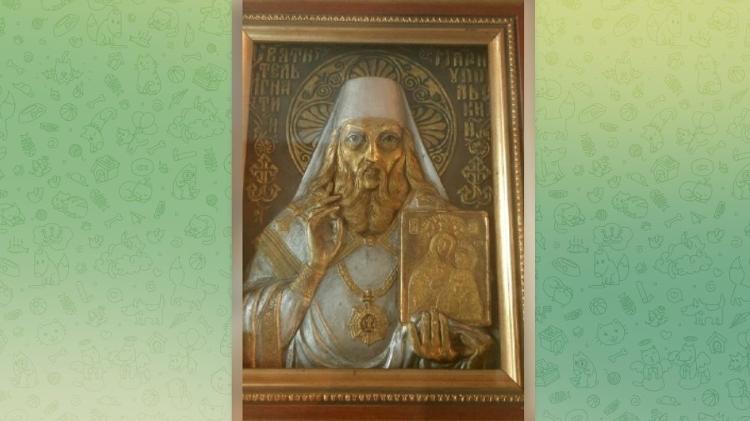Mariupol city council, which is an important resistance point against the Russian occupation in eastern Ukraine, announced that more than 2,000 objects exhibited in the city’s museums have disappeared and are believed to have been taken to the city by the Russian army. Donetsk is in the Russian-dominated separatist east.
Among the works taken from the Ukrainian city are the works of painter Ivan Aivazovsky, one of the great names of Russian romantic art and one of the masters of nautical-themed paintings, and Arkhip Kuindzhi, born in Mariupol. The main representatives of art in Russia – Andriy Yalansky, Oleksandr Olkhov, Mykola Hlushchenko, Tetyana Yablonska, Mykhailo Derehus and others.
According to Ukrainian media, the museum dedicated to Kuindzhi in the city in March was destroyed after the Russian bombing. In the open were letters, photographs, documents, the fountain where the painter was baptized, and copies of his paintings. Konstantin Chernyavsky, head of the National Union of Artists of Ukraine, said that the original canvases were not in the museum at the time of the attack.
It is alleged that a collection of more than 200 metal medals on display at the Mykolaiv Art Museum, the last stronghold of the Ukrainian resistance in Mariupol, was also taken.
The pieces were from the collection of artist Yukhym Harabet and were donated by the artist’s wife, Svitlana Otchenashenko-Harabet, who died during the Russian siege of the city this month.
A scroll of the Torah, the holy book of Judaism, and a copy of the Bible, dated 1811, made by a Venetian printing house for the Greeks of the city, are among those unearthed from the city.
The council prepares a document to initiate a criminal case and turns to Interpol to help recover these valuable objects.
UNESCO (United Nations Educational, Scientific and Cultural Organization) has so far counted damage to more than 110 different cultural sites since the beginning of the war.
Of these, 16 are located in the city of Mariupol, and in addition to the Kuindzhi Art Museum, the Local History Museum was destroyed in a Russian bombing.
In addition to the Mariupol Palace of Culture, many churches and historical ruins in the area were damaged.
Museums evacuated in Melitopol
Inside Melitopoltown in the same district, keeper of the Museum of Local Science, Leila IbrahimovaHe told The New York Times that Russian soldiers with machine guns stole 198 items, including several 2,300-year-old gold pieces dating back to the Scythian Empire.
According to the mayor, the museum has “one of the largest and most expensive collections in Ukraine.” MelitopolIvan Fyodorov.
Reports suggest that a man in a white coat “with long tweezers and special gloves”, along with a group of Russian soldiers, selected objects stored in the museum’s basement.
War destroys symbols
Since the start of the war on February 24, the port city of Mariupol on the Black Sea coast has been one of the most attacked. On April 4, the mayor stated that 90% of the city was destroyed and 40% of its infrastructure was “unrecoverable”. Then the Azovstal steel complex was taken over.
For the Russians, the total conquest of the port city of Mariupol makes it possible to unite the conquered territories in the south, especially the Crimean peninsula, which was annexed in 2014, with the pro-Russian separatist republics of Donetsk and Lugansk in the east.
The Russian army intensified its efforts towards this region to ensure its annexation to Russia.
Although most museums and galleries were closed shortly after the occupation began, cultural officials are working hard to recover artworks and valuable objects that have fallen victim to arson attacks.
Important cultural institutions were destroyed. Like the Mariupol Dramatic Theatre, hundreds of them took shelter in their basements and then fell into rubble.
A few days ago, the Sviatohirsk Rock Monastery in the eastern part of Donetsk, the oldest monastery in Ukraine, dating from 1526, was also severely damaged by bombings under the command of Moscow.
The preservation of cultural property is now becoming a growing part of humanitarian efforts to mitigate war, both within Ukraine and internationally.
The artist collective Asortymentna Kimnata (Sala Variada), located in the contemporary art gallery Ivano-Frankivsk in the west of the country, has rushed from the very first day of the occupation to evacuate and preserve the works of those with little sponsorship or support. .
In undisclosed places, the collective created several storage bunkers and received requests for help in the evacuation of galleries in Kyiv, Mariupol, Odessa, Zaporyjia and other cities.
“We take care not to lose the visual artworks in the back or front. After all, this war is also a war of cultures,” says Alyona Karavai, one of the founders of the collective.
About 20 museums in the four regions received financial assistance to save their exhibits, with priority given to institutions in small towns and villages in eastern and southern Ukraine, the epicenter of Russia’s military aggression.
The Emergency Fund for Art was also created to “deal with the consequences of the Russian occupation and the threats posed by the war to the Ukrainian art community.”
Venice Biennale
The Fountain of Exhaustion, by Kharkov-based 63-year-old sculptor Pavlo Makov, is at the center of the Ukrainian Pavilion at the Venice Biennale – it consists of 72 copper funnels arranged in a pyramidal shape, through which water barely flows. .
He was transported from Kiev to Austria to ensure that the exhibition took place in April, but the artist is still in a bunker in the bombed city.
Kharkov
It has one of the most valuable art collections in Ukraine. Kharkov It was the target of Russian bombs and was exposed to extreme humidity and heat.
Employees are trying to save about 25,000 objects by distributing them to the repositories. Most of the works are by Russian artists. (Information from AFP)
source: Noticias

